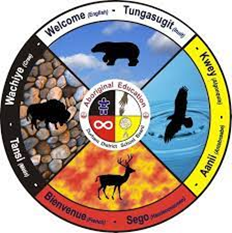Blog Post #5 Indigenous Perspectives in Teaching and Learning Innovation
Indigenous Perspectives in Teaching and Learning Innovation
Two-course readings on Indigenous Perspectives that resonated with me are:
- As if Indigenous knowledge and communities mattered: Transformative education in First Nations communities in Canada by J. Ball (2004):
This article discusses a unique approach to Indigenous community development through community-based education partnerships between First Nations and postsecondary institutions in Canada. It emphasizes the importance of Indigenous knowledge in teaching and learning through a generative curriculum model. This model includes “…. reconstruction of their cultural identity, revitalization of intergenerational transmission of culture and traditional language, and reproduction of culturally distinctive values and practices….” (Ball, 2004, p. 455)
The innovation in teaching and learning lies in the generative curriculum model, where Indigenous knowledge is brought into the teaching and learning process by community Elders, which is considered alongside Euro-western theory, research, and practice (Ball, 2004). The generative model includes uncovering new community-based knowledge through reflection and new understanding (Ball, 2004).
For the instructor, in the generative curriculum model, the curriculum is not static but dynamic and generated based on the learners’ needs and progress, which requires instructors to shift from mere deliverers of content to active facilitators of learning. It implies a need for a more inclusive, culturally sensitive approach to education that values and incorporates Indigenous knowledge (Ball, 2004).
One might ask how this model can be scaled or adapted to other Indigenous communities within and outside Canada, what challenges might arise in implementing this model, and how they can be addressed.
- Learning about walking in beauty: Placing Aboriginal perspectives in Canadian classrooms by the Coalition for the Advancement of Aboriginal Studies (2002):
This work explores the integration of Aboriginal perspectives into Canadian classrooms. “Walking in Beauty” is a term borrowed from the Navajo people, which means conducting oneself in harmony with the whole living world (Coalition for the Advancement of Aboriginal Studies, 2002).
The innovation in teaching and learning lies in integrating Aboriginal perspectives into mainstream curriculum, which is seen as a means of reinforcing Aboriginal identity and instilling the values, attitudes, and behaviours that express Aboriginal cultures. The pedological framework is a Learning Circle based on a traditional medicine wheel (Coalition for the Advancement of Aboriginal Studies, 2002). This model is rooted in Indigenous cultures and traditions and emphasizes holistic learning that integrates mental, physical, emotional, and spiritual aspects.
A question for the author may be how educators can effectively integrate Aboriginal perspectives into various subjects and what resources or training educators might need to do this effectively.
Figure 1: Medicine Wheel

(Durham District School Board, nd)
This work highlights the importance of incorporating Indigenous knowledge and perspectives into education, fostering a more inclusive and culturally diverse learning environment. The article suggests a need for ongoing dialogue, learning, and adaptation in teaching practices to serve Indigenous students and communities better (Coalition for the Advancement of Aboriginal Studies, 2002). Underscored in the discussion is the potential for education to play a role in cultural preservation and community development.son Plan
References
Ball, J. (2004). As if Indigenous Knowledge and Communities Mattered: Transformative Education in First Nations
Communities in Canada. The American Indian Quarterly. 28. 454–479. https://doi.org/10.1353/aiq.2004.0090
Durham District School Board, (nd). DDSB Aboriginal Welcome Wheel Lesson Plan
Series: Introduction to the Medicine Wheel. Retrieved from
https://ied.sd61.bc.ca/wp-content/uploads/sites/112/2019/02/Introduction_to_the_Medicine_Wheel.pdf
Coalition for the Advancement of Aboriginal Studies. (2002). Learning about walking
in beauty: Placing Aboriginal perspectives in Canadian classrooms. I-Portal.

